Verdict
The Polar Ignite 3 Titanium is a nicer watch than the original, not because of the added titanium, but because it’s dealt with its sluggish software issues. It still, however, has work to do to outpace the competition.
Pros
- Smoother running software than Ignite 3
- Good quality AMOLED display
- Useful sleep features
Cons
- Battery drop overnight
- Price has jumped up again
- Syncing issues with Polar Flow
-
Titanium bezelFeatures a Titanium bezel compared to the stainless steel counterpart found on the standard model. -
Skin temperature sensorIs able to determine the temperature of your skin, even as you sleep. -
5-day battery lifeCan last for up to 100 hours of training time in power-save mode.
Introduction
The Polar Ignite 3 sees Polar take its fitness and wellness watch that it launched in at the back end of 2022, and make some tweaks in the design and software departments.
The headline titanium bezel is in the name, as Polar seeks to make the new Ignite 3 a more attractive watch to work out with, while also adding features for strength training and sleep tracking to delve deeper into the world of wellness.
That does now come at an added cost with the Ignite 3 having already seen a pretty big jump up in price on the Ignite 2. With the Titanium version, things get even pricier.
So is it worth that extra spend, and is this now a better fitness and wellness watch? Here’s our verdict.
Design and screen
- Titanium bezel
- AMOLED touchscreen display
- Waterproof up to 30 metres
The Polar Ignite 3 Titanium is nearly identical to the Ignite 3. You’re getting a 43mm-sized case that measures in at 9.5mm thick and weighs in at 36g, so slightly up from 35g on the Ignite 3.
It’s still a plastic watch case, but now Polar has swapped a stainless steel bezel for a titanium one that doesn’t really alter the Ignite 3’s look in a radical way, but does help to create a very svelte design.
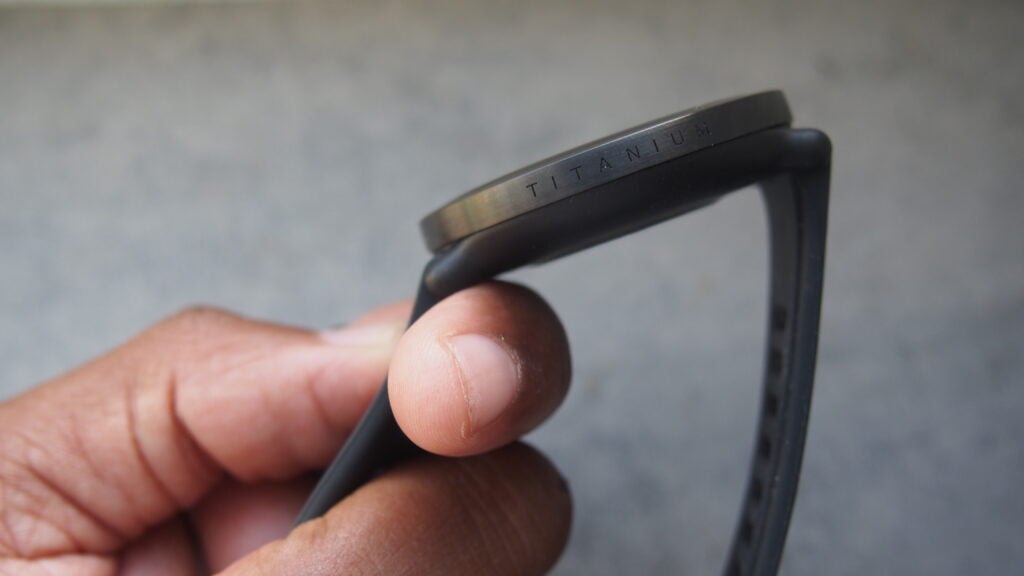
That holds in place a 1.28-inch, 416 x 416 AMOLED touchscreen display, so no change on the screen size or resolution either. Unlike my time with the Ignite 3, that display has remained scratch-free and if you’ve been waiting for a Polar watch with the kind of colourful display you’d find on most smartwatches these days, the Ignite 3 Titanium delivers a very good one.
There’s just a single physical button placed on the watch case so there’s a big emphasis on using that touchscreen, which has felt nicely responsive during my time with it. That case is paired up with a 20mm silicone watch strap that uses a traditional watch buckle and that strap can be removed. Then you’ll need to spend more to add in some leather.
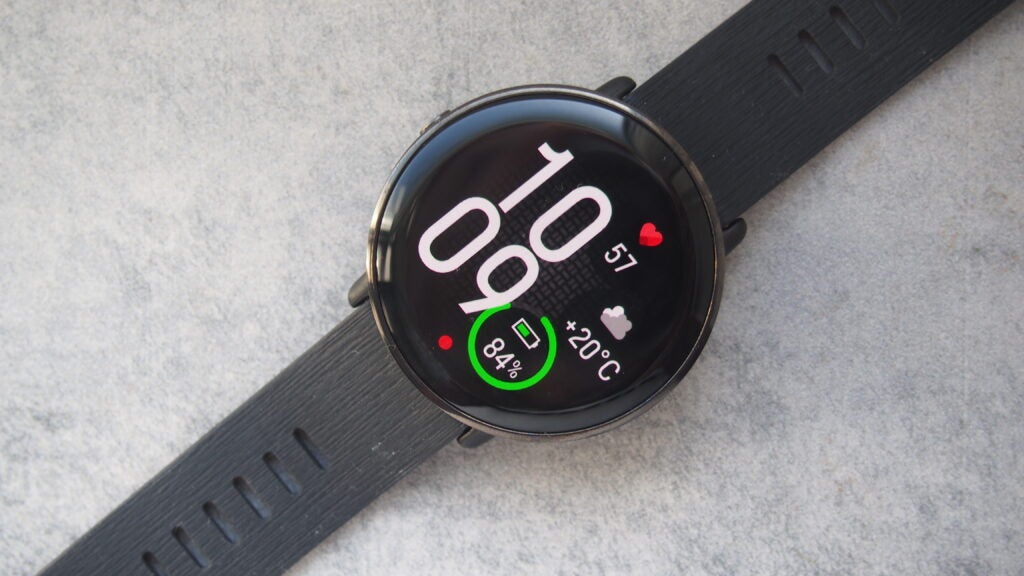
Nothing has changed on the waterproofing front, so it’s fit for swimming, bathing and showering and unsurprisingly isn’t going to be one you’ll want to take scuba diving.
Does the added titanium really transform the Ignite 3 into a significantly nicer watch to wear? Not necessarily. That really wasn’t the issue on the first Ignite 3. The issue lay with the durability of the screen, where Gorilla Glass remains to offer some protection against scratches and so far has managed to do a better job of protecting while putting it to tracking work.
Performance and software
- Works with Android and iOS
- Same smartwatch features as Ignite 3
- Software feels smoother
The first version of the Polar Ignite 3 certainly had some performance issues, despite Polar promising faster processing times compared to the Ignite 2 and 5MB of RAM, up from 0.64MB RAM.
It seems whatever Polar has done with the hardware and software powering the Ignite 3 Titanium does seem to have notably improved things on that front. It’s not as sluggish or laggy and generally just feels like a nicer watch to interact with.
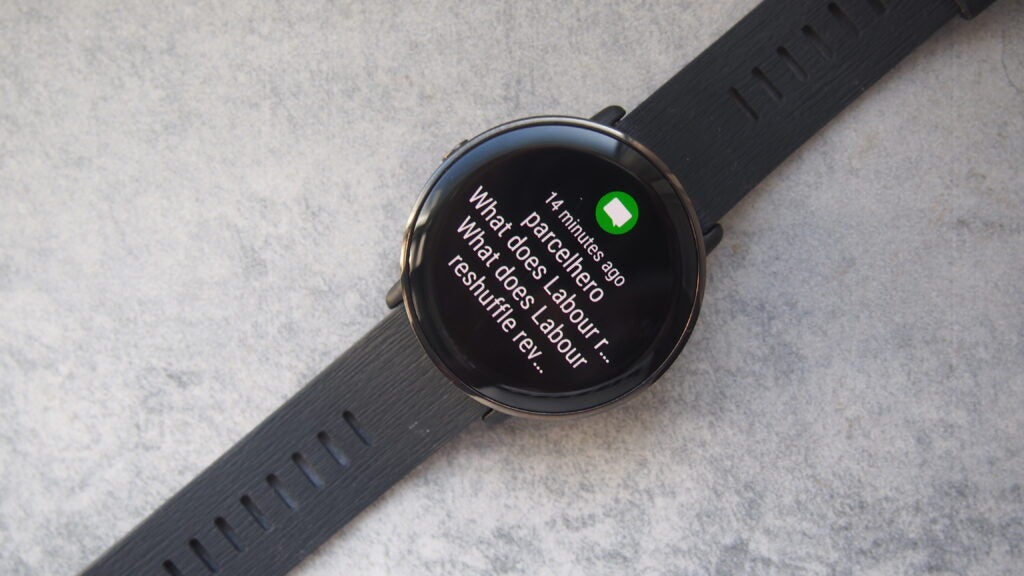
Functionality and presentation of Polar’s proprietary software hasn’t changed. You still have that bolder user interface that’s well optimised to the Ignite’s AMOLED screen and it certainly makes the Ignite 3 of all Polar’s watches feel the most smartwatch-like. It’s still just an okay smartwatch, however, and like a lot of sports watch brands, is trying to play catch up with the likes of Apple and Samsung on this front.
You can press down on the watch screen to change watch faces, swipe down to get to the quick settings menu or swipe up to get your notifications stream. It has all the familiar hallmarks of your typical Wear OS or Android-based smartwatch.
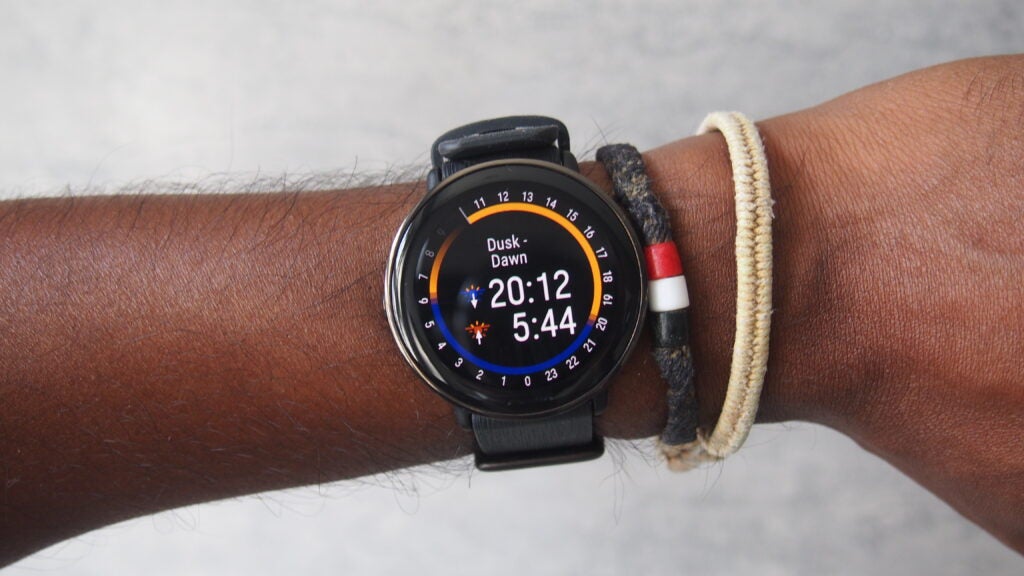
The widgets showing off your stats are easy to absorb and expand if you want to dig deeper and there’s a relatively short learning curve getting to grips with where everything lives. But it seems as though there’s always something with Polar’s watches that lets it down on the software front.
I had to continue testing the Ignite 3 with a second review unit because the first one suffered from pairing and syncing issues with both the Polar Flow iOS and Android apps. It worked with the Polar Flow desktop app, but some phone-specific features and some metrics have to be set up from your phone. Things were thankfully much better with the second unit.
Tracking and features
- Work-Rest guide for gym workouts
- Skin temperature tracking
- Dual-band GPS is still a bit sketchy
Along with that added titanium, Polar has sought to bolster the Ignite 3’s smarts with a few extras, which have since been turned on or added to the standard Ignite 3.
The first is the ability to monitor skin temperature while you’re sleeping, which is delivered from the optical sensors at the back of the watch and is designed to give you another way to gauge whether you’re feeling okay, recovering well from your previous day, but isn’t a feature designed for medical use.
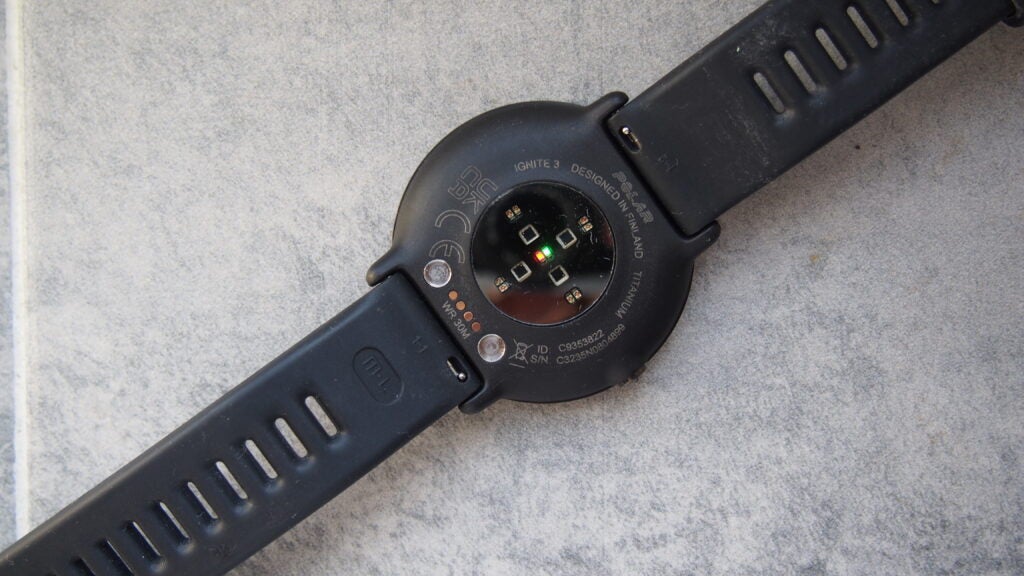
From the watch it will tell you whether your skin temperature was your usual temperature or it had fluctuated positively or negatively. This data can be displayed inside of the Flow app and is really about identifying trends over the weeks of each month that might help indicate whether there’s a change in your current wellness – but again, isn’t designed to be used for serious health insights.
Sleep is a big focus for Polar, so along with temperature monitoring it’s also giving you core sleep stats like sleep stages, sleep duration and then delves into aspects like sleep solidity and sleep regeneration.
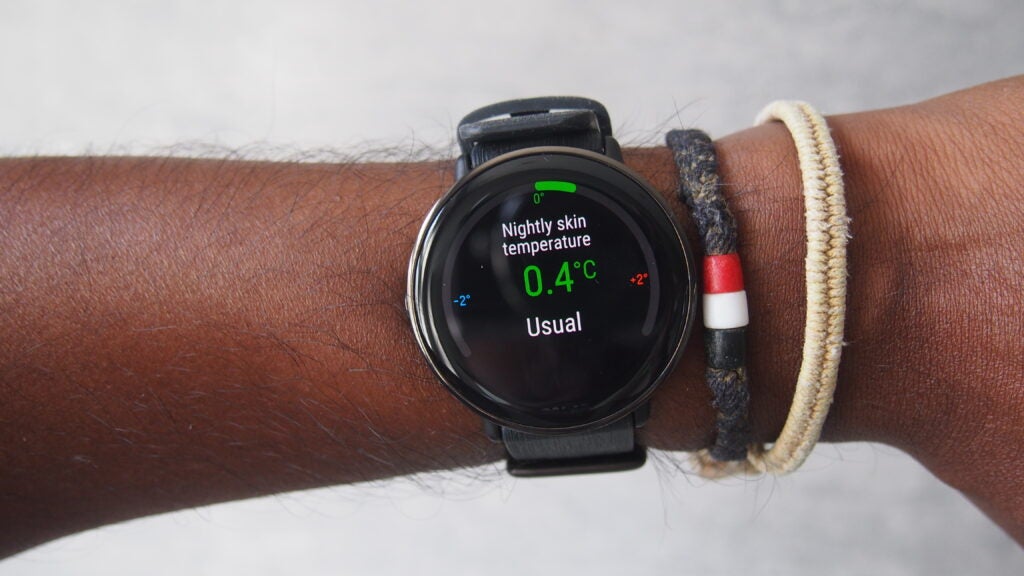
It also provides its own Nightly Recharge and SleepWise measurements that aim to tell you more about your recovery during sleep and how that sleep will boost energy levels the following day. The presentation of some of that sleep information is handled better on the watch than off it, as it can feel pretty complex inside of the Flow companion app.
In terms of the core sleep data, I wore a Garmin watch, the Oura Ring Gen 3 and Ultrahuman Ring Air with the Ignite 3 on most nights and found that the other three devices reported similar times I fell asleep where the Polar suggested falling asleep earlier, though it did produce similar wake up times. It reported a similar sleep score to those devices, and the crux of the sleep data felt good enough to make those other insights it powers potentially useful.
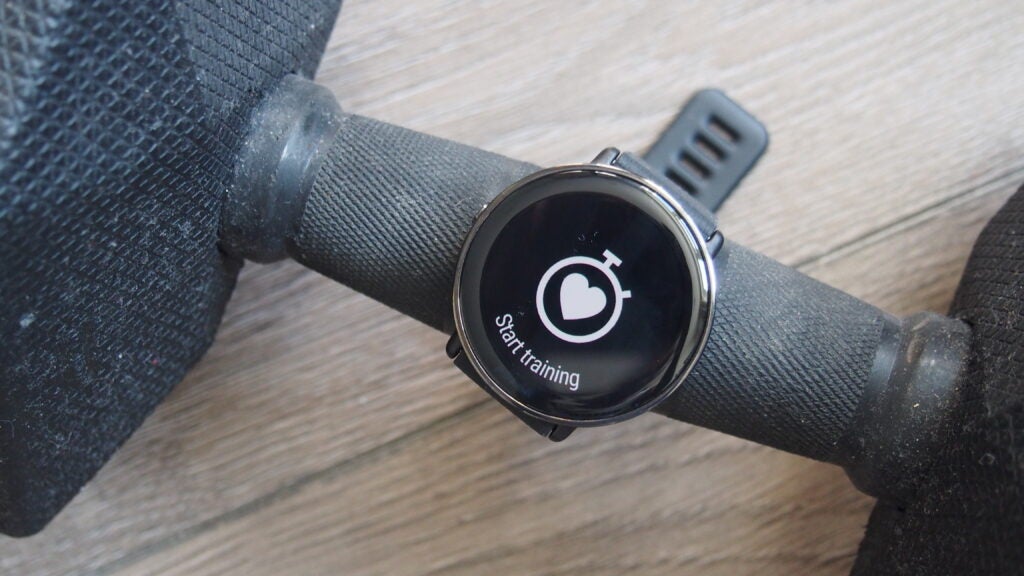
Another new feature, which has since been added to the Ignite 3, is called the Work-Rest guide. This is a heart rate-driven feature basically designed for exercises based around strength training and workouts, like kettlebell sessions, that tells you when you’re well recovered to start your next set. You need to set up the view in the Flow app (web or phone app) to use it
It’s a nice addition that’s based on heart rate data being reliable enough to know when you’ve really hit your limit in training and your body is ready to go again.
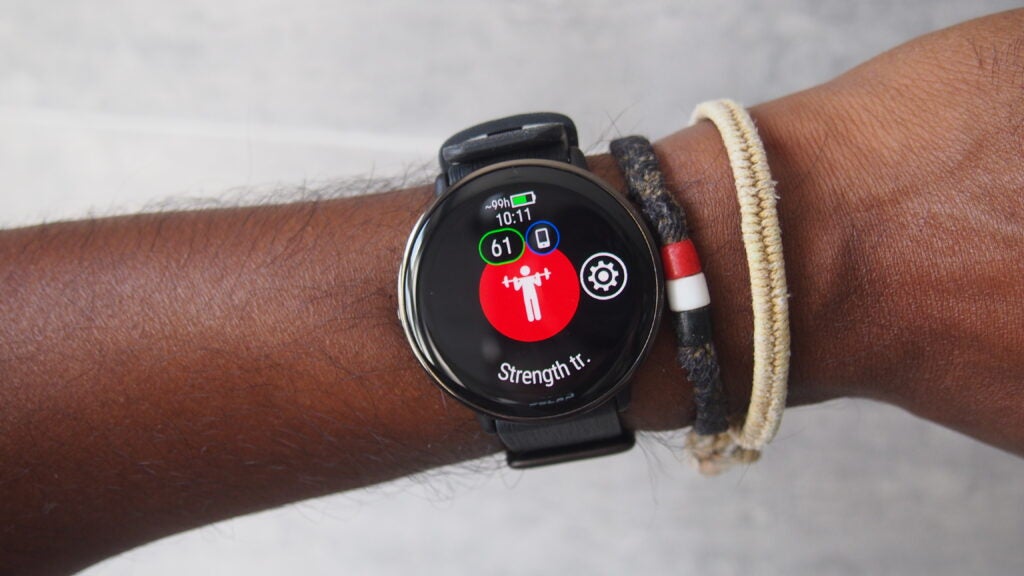
On the heart rate accuracy front, the onboard sensors have held up pretty well against a heart rate monitor chest strap compared to the first Ignite 3 (even in more intense sessions) and performed well for steady-paced workouts as well. You have the option to pair it up to an external heart rate sensor if you’re not satisfied with the overall accuracy for all workouts as well.
Polar retains the dual-band GPS mode it included on the Ignite 3 to improve outdoor tracking accuracy by tapping into multiple satellite signals simultaneously. On the first Ignite 3 it didn’t hugely impress and not much has changed.
I used it alongside the very impressive multi-band GPS mode on Garmin’s Forerunner 965 and the Ignite 3, in comparison, had me running through buildings very early on in the post-run data, while metrics like distance tracked and average pace were slightly off too.
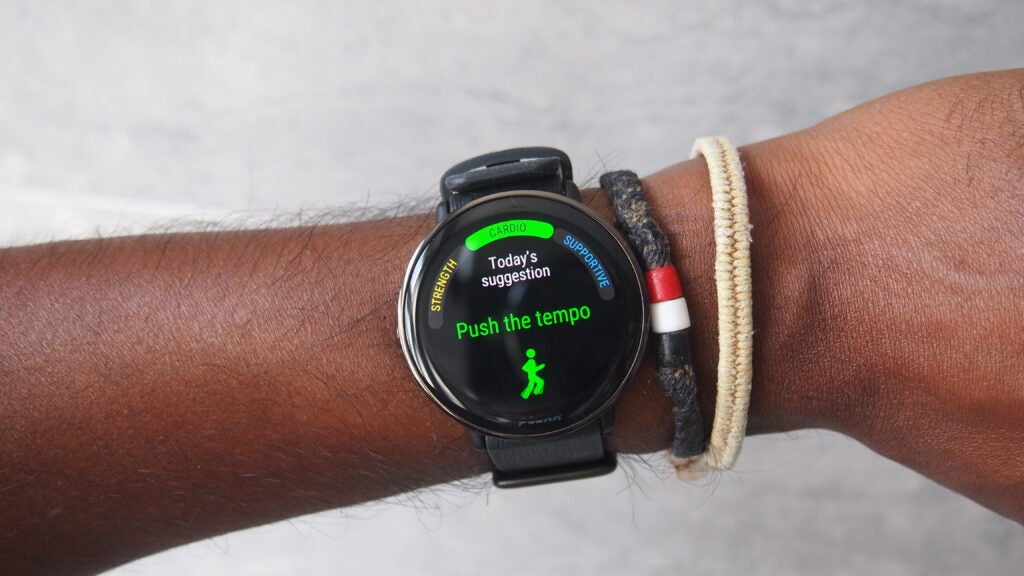
You still have Polar’s great FitSpark feature, which does a very nice job of suggesting workouts you can do inside (or outside) based on workout history. So after a long run the following day, it suggested spending time doing some strength work and suggested the type of session, which may seem like an obvious suggestion for more seasoned fitness fans after a big blast of cardio, but that’s useful for those at the start of their fitness journey.
Elsewhere, you’re still getting the same 150 sports profiles to pick from and features like Polar’s FuelWise fuelling recommendations to set reminders to refuel and hydrate for longer workouts, a trio of performance tests including a walking one to assess current fitness levels and training insights that will tell you if you’re putting in productive levels of training or even doing too much.
Battery life
- Up to 5-days battery life in watch mode
- Up to 30-hours GPS battery life
- 100-hours in power save training mode
The battery promised on the Polar Ignite 3 Titanium hasn’t budged from the numbers promised on the first Ignite 3.
You’ll get up to 5 days in typical use, with 30 hours of GPS battery life to play with and a power save training mode that gets you 100 hours of workout tracking, albeit without heart rate data and less regular sampling of GPS data.
I found those numbers to match up again and this is a watch that can go for just under a week with regular workout tracking and using features like notifications and music controls.
There is the ability to set the screen to stay on 24/7, which once again sucks the life out of the battery and you’re getting just over a day’s use. An hour of GPS-based running saw battery drop by 8%, while Polar’s sleep features remain a bit of a battery hog, knocking the battery by 5% overnight.
Should you buy it?
You want a less laggy Polar Ignite watch: Polar has managed to make some performance tweaks to make the Ignite 3 Titanium run noticeably smoother than the first Ignite 3.
You want the best sporty smartwatch: While adding an AMOLED screen is a big step forward for Polar, it’s still a work in progress when it comes to marrying those sports tracking and smartwatch features. Check out our best smartwatch guide for more options.
Final Thoughts
The Polar Ignite 3 Titanium is really about the option of that titanium bezel because the added software features have now rolled back to the cheaper Ignite 3.
That same software somehow feels a touch smoother, but ultimately it’s the same watch, making it feel like a nice option for those who care more about a fitness watch that’s high on looks and moving in the right direction. However, it’s hard to look past buying a similarly priced AMOLED-packing Garmin watch instead that will offer more reliable sports tracking in general.
FAQs
Yes, you can swim with the Polar Ignite 3 with a dedicated pool swimming mode to track that metrics including distance and average strokes.
The Polar Ignite 3 does work with iPhones and is compatible with the Polar Flow app available in the Apple App Store.
















